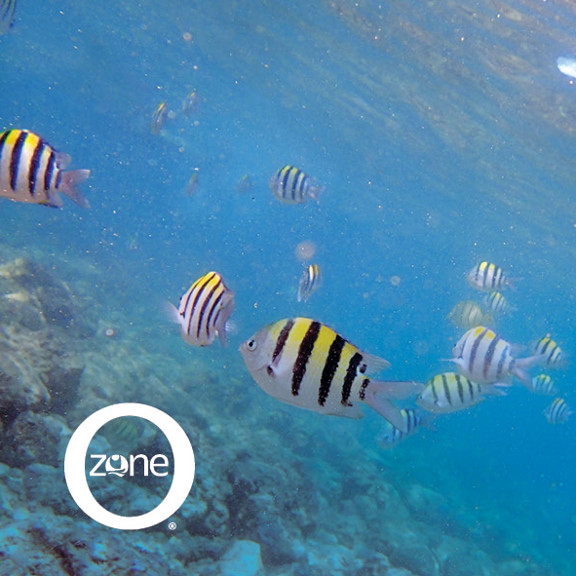
3Wichtige Tipps zum Schutz der Riffe *und* der Sonne
Haben Sie schon gehört, dass viele Sonnenschutzmittel Chemikalien enthalten, die für unsere unschätzbaren Korallenriffe schädlich sind? Es stimmt. Tatsächlich war Hawaii kürzlich der erste Staat, der den Vertrieb der Chemikalien Oxybenzon und Octinoxat im Bundesstaat verboten hat.
Korallenriffe sind für die Gesundheit des komplexen Ökosystems unserer Ozeane und den Schutz unserer Küsten von entscheidender Bedeutung. Sie sind sogar eine Quelle für neue Medikamente zur Behandlung von Krebs, Herzkrankheiten und anderen Krankheiten. Dies sind nur einige der Gründe, warum wir 2014OZONE (Outrigger's ZONE) ins Leben gerufen haben. Sie haben uns schon einmal darüber sprechen hören. OZONE ist unsere globale Naturschutzinitiative, die sich für den Erhalt unserer Korallenriffe einsetzt.
Unsere Riffe sind vielen Risiken für ihr Überleben ausgesetzt, und gleichzeitig ist die ultraviolette (UV) Strahlung eine echte Bedrohung für die Gesundheit des größten Organs unseres Körpers – unserer Haut! Wie können wir also beide Korallenriffe schützen und den Anweisungen unserer Ärzte folgen?
Hier sind 3 großen Tipps, um unsere Meeresgesundheit und die Gesundheit unseres Körpers gleichzeitig zu schützen:
1. Tragen Sie Schutzkleidung. Wenn wir draußen in der Sonne sind, ist es wichtig, unser Gesicht und unsere Schultern zu bedecken, da dies oft die Teile sind, die der Sonne am meisten ausgesetzt sind. Breitkrempige Hüte und Hemden aus dicht gewebten Stoffen mit Ärmeln sind ein guter Anfang. Tragen Sie beim Schwimmen einen Rashguard – Hemden, die zum Schwimmen gedacht sind. Und vergessen Sie nicht Ihre Sonnenbrille!
2. Bleiben Sie im Schatten – guter Schatten. Bäume mit großen Kronen, die den größten Teil des Himmels verbergen, Sonnenschirme an Gebäuden und Strandzelte können guten schützenden Schatten bieten. Obwohl direktes Sonnenlicht am schädlichsten ist, ist es wichtig, sich daran zu erinnern, dass nicht alle Schatten gleich sind. UV-Strahlung ist nicht zu sehen oder zu spüren und kann von Wasser, Sand, Beton und sogar Gras reflektiert werden. Ein guter Weg, um zu wissen, ob Sie indirektem Sonnenlicht ausgesetzt sind, ist, wie viel vom Himmel Sie sehen können – je weniger, desto sicherer. Vergessen Sie nicht, dass Wolken UV-Strahlen streuen, sie stoppen sie nicht.
3. Verwende riffsichere Sonnencreme. Die sichere Art sind mineralische Sonnenschutzmittel, die die Sonnenstrahlen reflektieren und Inhaltsstoffe wie Zinkoxid oder Titandioxid verwenden. Diese Typen ziehen nicht in Ihre Haut ein, wie es die chemischen Sonnenschutzmittel tun. In den meisten Drogerien sind viele Sonnenschutzmittel erhältlich, die die schädlichen Chemikalien Oxybenzon oder Octinoxat (oder Octylmethoxycinnamat) nicht enthalten. Sie können sich auch eine riffsichere Sonnencreme in Ihrem Lieblingshotel in Outrigger holen. Da immer mehr Verbraucher rifffreundliche Entscheidungen treffen, werden wir immer mehr Sonnenschutzmittel sehen, die sowohl uns als auch unsere Ozeane schützen.